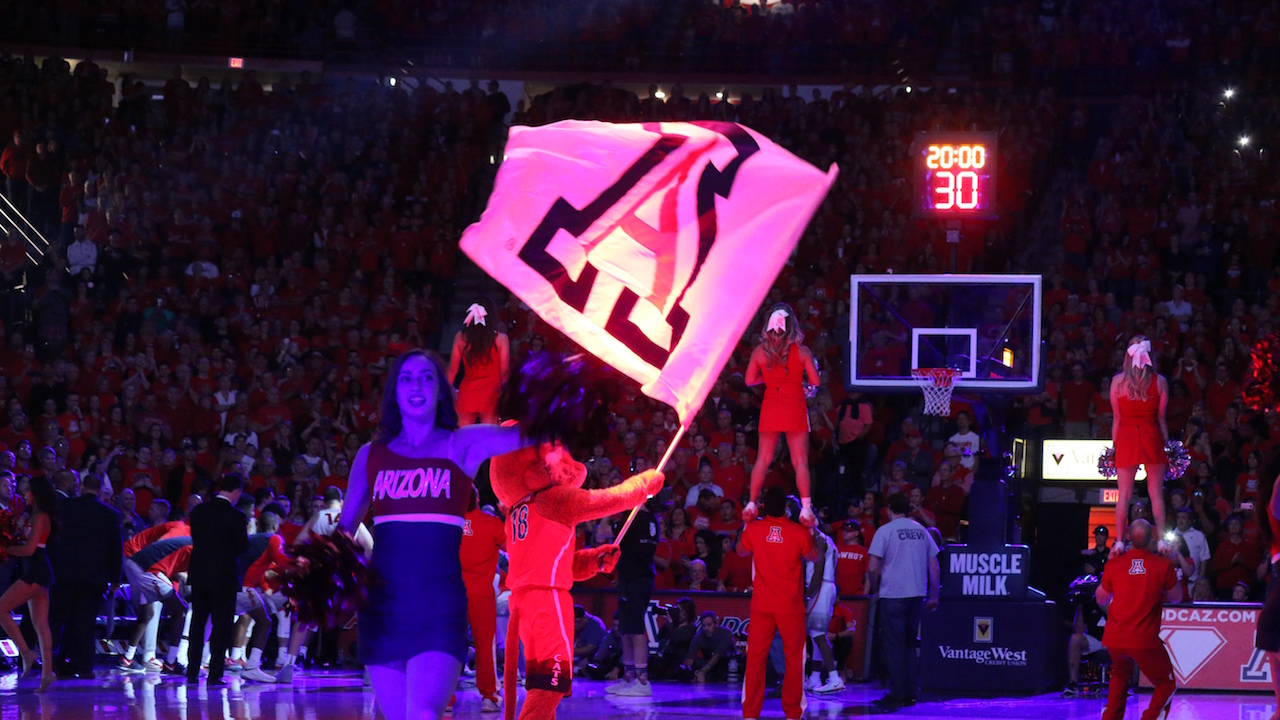The Hotline mailbag publishes weekly. Send questions to pac12hotline@
Please note: Some questions have been edited for clarity and brevity.
When there’s smoke, is there usually fire? — BeaverSheets
I assume you’re referring to the future conference affiliation for Oregon State and Washington State.
Social media was atwitter this week with speculation that the Big 12, at ESPN’s behest, might extend membership invitations to the Cougars and Beavers.
Our advice: Ignore the scuttlebutt.
“The Big 12 has no interest in them,” said an industry source familiar with commissioner Brett Yormark’s strategy.
Another source called the rumors “head-scratching.”
A third said additional westward expansion for the Big 12 has not been discussed with campus officials in any material fashion.
Sure, the schools would add Pacific Time Zone kickoffs to the Big 12’s media rights inventory. But don’t you think Yormark and ESPN executives considered that issue last summer when they declined to offer membership to the Cougars and Beavers?
Also, Big 12 schools would never agree to accept lower media rights distributions, which means:
— The Cougars and Beavers would be forced to enter the conference as half- or quarter-share members, placing them at a massive competitive disadvantage.
— ESPN and/or Fox would have to cover the cost of the additions and spend at least $75 million that they didn’t feel compelled to spend last summer.
Also, the Big 12 is currently focused on assimilating the Four Corners schools, not on expansion. Conference and campus officials want to assess the 16-school structure before turning their gaze to 18 or more.
And if the Big12 does expand, schools in the ACC, starting with Clemson and Florida State — if they’re available and interested — would be the top targets.
In other words, nothing about adding WSU and OSU makes sense.
All that said, we must add one caveat: If the ACC disintegrates at some point in the next 12-36 months, the situation could change. It could change for the Big 12, the SEC and the Big Ten and the entire power conference structure.
But as things stand, with four intact power conferences, the door to the Big 12 is closed for the Cougars and Beavers.
Which is precisely why the two-year grace period is vital, granting them time to let the landscape evolve.
What type of media deal would the Pac-12 have gotten if the presidents had the patience to wait until after the 2023 football season? — @draywilson29
The Hotline has addressed this topic in the past, but it’s worth another mention given that Sunday marks the one-year anniversary of the Pac-12’s implosion.
Had the schools been willing to bet on themselves and delay the media rights negotiations until the winter of 2023-24, the conference likely would have remained intact.
The Pac-12’s media value in December 2023, after a fabulous regular season with elite teams and terrific TV ratings, was substantially higher than it was when then-commissioner George Kliavkoff presented his deal to the presidents one month before kickoff.
Our hunch is a contract with substantial linear exposure and an average valuation of $35 million per school would have been available.
But that scenario could only have played out in an alternate universe, because the presidents weren’t wired to wait — they were under tremendous pressure to lock in a media deal — and because Kliavkoff wasn’t capable of holding the schools together for six more months.
Trust in his leadership had dissolved by then.
It’s a fascinating topic to ponder but one that’s ultimately irrelevant.
What do you know about the Pac-12 potentially filing lawsuits against Fox and ESPN? — @jimmy0726
We are not aware of any substantive movement on that front, and it would be a massive miscalculation.
For all the frustration in Pullman and Corvallis over the role the networks played in the Pac-12’s collapse — Fox bears much greater responsibility than ESPN, in our view — the Cougars and Beavers must remain in good graces.
Why? Because whether they rebuild the conference or join the Mountain West, WSU and OSU must sign a media rights deal sometime in the next 12-18 months (to begin in the fall of 2026). And Fox, which has an existing deal with the MW that expires in the summer of 2026, is more likely than ESPN.
The Cougars and Beavers are better off keeping their frustrations out of the legal system.
Much has been made of Washington receiving a half-share of Big Ten media revenue. How does it compare to the last Pac-12 deal that we turned down? — @RockDawg3
Multiple sources told the Hotline last year that Apple’s final offer would have guaranteed each school $25 million, with the potential for more if certain subscription tiers were reached throughout the contract term.
(Our understanding: The lowest tiers would have been easily reached within a few years.)
In the Big Ten, the Huskies will receive approximately $32.5 million annually, on average, as a half-share member over the length of the six-year contract.
Also, the Big Ten offers massive linear television exposure, aside from a smattering of games on Peacock, whereas the Apple deal likely would have been exclusively streaming.
The Huskies based their decision on what was best for the football program in the near term. Was it shortsighted? You could certainly make the case for partnering with the most influential media company in the world.
But we don’t blame UW for rejecting the offer Kliavkoff placed on the table. We don’t blame any single school for the demise of the conference. The collapse was many years in the making due to a series of strategic miscalculations.
What’s the earliest Cal and Stanford can get out of the ACC contract at the lowest price and beg Oregon State and Washington State to let them back into the Pac-12? — @DrDreNoCal
Based on our reading of Cal’s membership letter, the Bay Area schools don’t have an escape hatch; they are bound to the ACC until the summer of 2036.
Of course, that assumes the ACC exists until the summer of 2036.
If Clemson and Florida State are successful in extricating themselves from the grant-of-rights deal, then North Carolina will surely follow and the ACC would be left without its three most valuable schools. At that point, the conference could very well dissolve, leaving Cal and Stanford with the option to return to a rebuilt Pac-12.
We should add one important nugget: ESPN’s contract reportedly features an escape clause in 2027, so long as the network gives the ACC notice by Feb. 2025.
We don’t expect ESPN to end the partnership unless Florida State and Clemson succeed in their attempt to break the grant-of-rights deal and exit the conference.
With USC and UCLA’s departure and the Hotline’s article about Cal and Stanford having a massive budget hole, how much financial ruin did the two L.A. schools cause the entire conference? — JoeInOregon87
Goodness, that’s a complicated topic — one that easily could fill a 1,000-word column.
We’ll attempt to simplify here with the following presumption: If USC and UCLA had remained in the Pac-12, the resulting media rights contract likely would have paid each school at least $40 million annually and perhaps as much as $45 million.
Which schools stand to earn that much from the media deals with their new conferences?
Only USC and UCLA, which should collect $60 million to $65 million annually in the Big Ten. (Of note: The Bruins are on the hook to send $10 million to Cal for at least the next three years, per orders from the UC Regents.)
For everyone else, the situation is as follows:
— Oregon and Washington will receive about $32.5 million on average from the Big Ten.
— The Four Corners schools are set to collect $31.7 million (on average) from the Big 12.
— Cal and Stanford will receive roughly $10 million annually in the first seven years of their tenure in the ACC.
So yes, the eight schools that departed last summer will be cashing smaller media rights paychecks with their new conferences than they would have with an intact Pac-12.
Can we go back to the Friday Hotline mailbag? It just has a nice ring to it. — @TerryTerry79
The mailbag was pushed back one day this week due to our series on the Pac-12 schools starting their new eras.
The rollout began with three radical suggestions for the Big 12 football schedule and continued with a look at the financial challenges facing Cal and Stanford in the ACC.
Next, we examined Big Ten commissioner Tony Petitti’s leadership style and his relationship with the SEC’s Greg Sankey.
Finally, the Hotline reported on the latest developments with WSU and OSU.
Next week, the mailbag will return to its usual slot on Friday morning.
Thanks for asking.
*** Send suggestions, comments and tips (confidentiality guaranteed) to pac12hotline@
*** Follow me on Twitter/X: @WilnerHotline
Related posts:
 Brandon Huffman Pac-12 recruiting notebook
Brandon Huffman Pac-12 recruiting notebook
 Wilner Hotline – Pac-12 basketball: Winners and losers from NBA Draft decisions, transfer portal moves and even old-fashioned recruiting
Wilner Hotline – Pac-12 basketball: Winners and losers from NBA Draft decisions, transfer portal moves and even old-fashioned recruiting
 Wilner Hotline – Pac-12 on the brink: USC and UCLA expected to seek membership in the Big Ten
Wilner Hotline – Pac-12 on the brink: USC and UCLA expected to seek membership in the Big Ten

(AP Photo/Tony Gutierrez)
Big 12 commissioner Brett Yormark asks Arizona Board of Regents for continued investment in athletics

